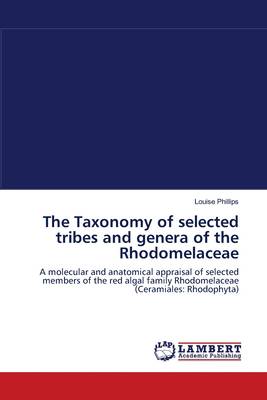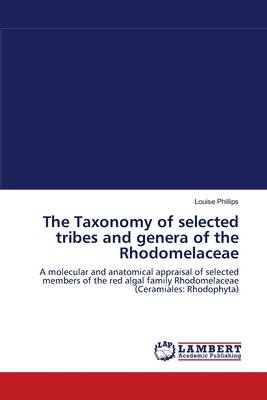
Door een staking bij bpost kan je online bestelling op dit moment iets langer onderweg zijn dan voorzien. Dringend iets nodig? Onze winkels ontvangen jou met open armen!
- Afhalen na 1 uur in een winkel met voorraad
- Gratis thuislevering in België vanaf € 30
- Ruim aanbod met 7 miljoen producten
Door een staking bij bpost kan je online bestelling op dit moment iets langer onderweg zijn dan voorzien. Dringend iets nodig? Onze winkels ontvangen jou met open armen!
- Afhalen na 1 uur in een winkel met voorraad
- Gratis thuislevering in België vanaf € 30
- Ruim aanbod met 7 miljoen producten
Zoeken
The Taxonomy of selected tribes and genera of the Rhodomelaceae
A molecular and anatomical appraisal of selected members of the red algal family Rhodomelaceae (Ceramiales: Rhodophyta)
Louise Phillips
Paperback | Engels
€ 77,95
+ 155 punten
Omschrijving
The largest of the 80 families of red algae is the Rhodomelaceae. A great many genera and species are restricted to Australasia, which is the major centre of diversity and distribution. Perhaps as a consequence, the Rhodomelaceae has remained relatively unstudied compared with most other red algal families even at the morphological/ anatomical level. This work studies selected tribes and genera, all of which have a strong Australasian component. Anatomical and molecular analyses have been undertaken on members of the tribes Amansieae, Pleurostichidieae, Streblocladieae and Sonderelleae. The results of these analyses have led to the description of two new genera, three new species, and one new tribe as well as the resurrection of two genera and the recombination of ten species. The taxonomic position and validity of the studied tribes and genera has also been established. This study will be of particular interest to taxonomic phycologists or anyone else interested in the marine botany of the Australasian region.
Specificaties
Betrokkenen
- Auteur(s):
- Uitgeverij:
Inhoud
- Aantal bladzijden:
- 508
- Taal:
- Engels
Eigenschappen
- Productcode (EAN):
- 9783838300726
- Verschijningsdatum:
- 15/05/2010
- Uitvoering:
- Paperback
- Formaat:
- Trade paperback (VS)
- Afmetingen:
- 152 mm x 229 mm
- Gewicht:
- 739 g

Alleen bij Standaard Boekhandel
+ 155 punten op je klantenkaart van Standaard Boekhandel
Beoordelingen
We publiceren alleen reviews die voldoen aan de voorwaarden voor reviews. Bekijk onze voorwaarden voor reviews.











